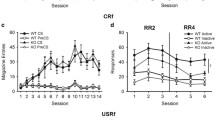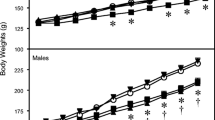Abstract
Rationale: Recent evidence indicates that specific serotonin (5-hydroxytryptamine; 5-HT) reuptake inhibitors (SSRIs) are not a clinically or experimentally homogeneous class of drugs. Because the differential- reinforcement-of-low-rates 72-second (DRL 72-s) operant schedule has been extensively used as a screen for antidepressant effects of drugs, different SSRIs were compared on the task to further examine their behavioral effects. Objectives: These experiments were designed with two main purposes in mind: first, to determine whether all three SSRIs tested would produce antidepressant-like effects on the DRL 72-s (as measured primarily by an increase in reinforcement rate) and, second, to identify differences between the drugs using peak-deviation analysis of inter-response times (IRTs). Methods: Different groups of rats were injected with one of three SSRIs: fluoxetine, sertraline, or paroxetine. Following drug administration, rats were tested on the DRL 72-s operant schedule. Results: All three SSRIs produced significant increases in reinforcement rate, but only sertraline and fluoxetine significantly decreased response rate. Additionally, paroxetine was observed to disrupt the pattern of responding as indicated by decreases in peak area (PkA). Sertraline and paroxetine, but not fluoxetine, produced increases in peak location (PkL). Conclusions: These results indicate that, although SSRIs are correctly identified as antidepressants by the DRL 72-s operant schedule, they may exert their effects in subtly different ways, as indicated by the differences observed to exist between the drugs. It appears unlikely that the behavioral effects of the SSRIs are attributable solely to 5-HT transporter binding. Instead, the differential behavioral effects may be the result of a combination of factors, including 5-HT transporter binding, 5-HT1A autoreceptor activation, and binding to other receptors.
Similar content being viewed by others
Author information
Authors and Affiliations
Additional information
Received: 26 January 1999 / Final version: 15 June 1999
Rights and permissions
About this article
Cite this article
Sokolowski, J., Seiden, L. The behavioral effects of sertraline, fluoxetine, and paroxetine differ on the differential-reinforcement-of-low-rate 72-second operant schedule in the rat. Psychopharmacology 147, 153–161 (1999). https://doi.org/10.1007/s002130051155
Issue Date:
DOI: https://doi.org/10.1007/s002130051155




